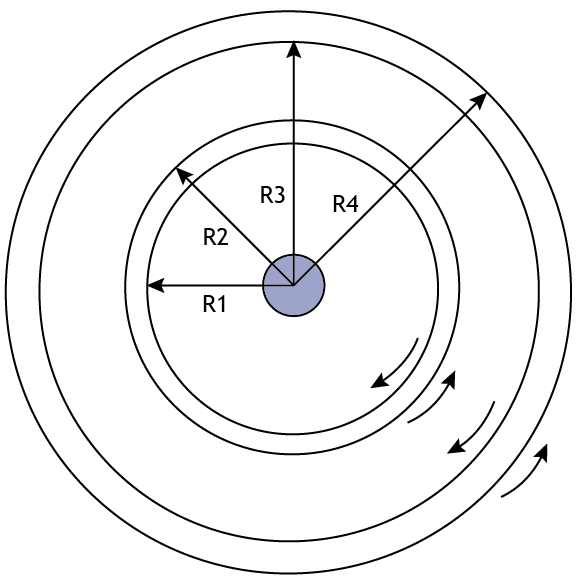Scientists from the Astro Space Center of the Lebedev Physical Institute calculated the configuration of a promising satellite system designed to study the immediate vicinity of supermassive black holes. A space observatory, consisting of three or four satellites, will exceed the Event Horizon Telescope resolution by 10 times. The study results are available in the archive of electronic preprints at arxiv.org.
Recently, radio interferometry with very long bases has brought significant results. During observations with the space-ground interferometer RadioAstron, the researchers achieved a record angular resolution of 8 microarcseconds. And the participants of the Event Horizon Telescope project managed to build images of the shadows of supermassive black holes in the galaxies Sgr A and M87. These images had a resolution of 25 microarcseconds. To improve the quality of images, it is necessary to observe at shorter wavelengths. But the Earth's atmosphere remains one of the main obstacles to such observations. The right decision would be to create a fully space-based interferometer, consisting of several vehicles. This would make it possible to overcome the atmospheric frequency threshold above 345 GHz and observe at higher frequencies. This would reduce the effects of radio wave scattering on cosmic plasma.
Currently, several space interferometer projects are being developed worldwide. For example, the Space Millimeter VLBI Array (SMVA) project involves the launch of three to four 15-meter antennas operating at frequencies up to 43 GHz into elliptical orbits. The SMVA's maximum angular resolution will be 20 microseconds of arc, which is only slightly superior to the Event Horizon Telescope. Another project, called the Event Horizon Imager (EHI), consists of two or three space telescopes. They will be located in polar or equatorial circular earth orbits. EHI involves joint observation at frequencies up to 690 GHz with ground-based observatories part of the Event Horizon Telescope collaboration. The more recent TeraHertz Exploration and Zooming-in for Astrophysics (THEZA) project proposes scalable spacecraft configurations operating at frequencies up to 1 THz. The project of South Korean astronomers CAPELLA, which is close to the published concept, but in this case the quality of the restored images is lower. One of the key problems of the mentioned projects is that long-term observations will be required to obtain a high-quality image of the shadow of a supermassive black hole. For example, EHI information accumulation time is about one month.
Scientists from ASC LPI have developed a novel concept of space interferometer geometry. They showed that a constellation of three to four vehicles equipped with antennas approximately 3-4 meters in diameter, operating at frequencies up to 690 GHz, can restore a better image of the shadow of a supermassive black hole. This is in less time than previously discussed projects. To do this, satellites must move in circular orbits with radii of 7500, 8000, 22500 and 23000 kilometers. Moreover, one internal and one external orbit must be retrograde, that is, the satellites on them will move in the opposite direction. Such a space constellation will be able to reconstruct the image of the observed source with an accuracy of 2 microseconds of arc. This is 12 times better than the Event Horizon Telescope images in 2019 and 2022. In this case, an image can be obtained in just 20 hours. Earlier projects took a few days to months to complete. Thanks to this, the upcoming Russian observatory will observe changes in the appearance of black hole surroundings in almost real time. In fact, it will no longer be a “photo”, but a “video” of a black hole.
Scientists note that it will take only two launches to launch four devices. One rocket launches a pair of devices into normal orbits, and the second into retrograde ones. And thanks to the very short acquisition time of just 20 hours, astronomers can study the immediate vicinity of supermassive black holes. This is not only with higher angular resolution, but also in dynamics. That is, to observe the movement of matter in the immediate vicinity of the event horizon.
